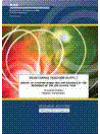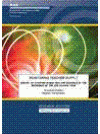The 2007 Monitoring Teacher Supply report provides the Ministry with a snapshot of the number of entitlement staffing vacancies and re-advertised vacancies in schools at the start of Term 1, how these vacancies are being covered and, in the case of secondary schools, in what subject areas pressure points are occurring.
Key Results
Since 1997, the Research Division of the Ministry of Education has undertaken a survey of all state and state integrated schools at the beginning of each school year to monitor the staffing situation in New Zealand schools. The one-page survey form provides the Ministry with a snapshot of the number of entitlement staffing vacancies and re-advertised vacancies in schools at the start of Term 1, how these vacancies are being covered, and in the case of secondary schools, in what subject areas vacancies are occurring. While school vacancies are also monitored through the March roll returns and through the advertisements in the Education Gazette this survey provides the Ministry with valuable vacancy information early in the school year.
The 2007 survey achieved an excellent response rate of 95 percent of all schools. Completed surveys were returned by 95 percent of primary schools and 93 percent of secondary schools.
Results from this year show that overall staffing vacancies in New Zealand schools at the beginning of the school year, as a proportion of all entitlement positions, remained at a similar level to the previous year (2006). Although there was a slight drop in the proportion of vacancies at the primary level, vacancy levels in secondary schools remained fairly constant. As in previous years, a relatively small proportion (13.4%) of schools overall had vacancies. Nine percent of primary schools had vacancies at the beginning of the school year; the vacancies within these schools represented 0.7 percent of all entitlement positions in 2007. Thirty-five percent of secondary schools had vacancies at the beginning of the school year; the vacancies within these schools represented 1.0 percent of all entitlement positions in 2007.
Re-advertised positions in schools are considered to be an indication of ‘hard-to-staff’ positions. Although in 2007 there was an increase in the number of re-advertised positions from the previous two years, the number of vacancies was lower than those experienced in 2002, 2003 and 2004. Fifty-three percent of all secondary vacancies and 0.6 percent of all entitlement positions were re-advertised. This compares with 41 percent of all secondary vacancies and 0.4 percent of all entitlement positions in 2006. In primary schools, 27 percent of all primary school vacancies and 0.2 percent of all entitlement positions were re-advertised in 2007 (compared with 22% of all primary vacancies and 0.2% of all entitlement positions in 2006).
Further results from the survey in 2007 indicated that:
- The Whangarei local office area recorded the highest proportion of vacancies (1.6% all of entitlement positions), as well as the highest proportion of re-advertised positions (0.9% of all entitlement positions).
- As in previous years, the proportion of vacancies and re-advertised vacancies were greater in schools with larger concentrations of Māori students and in deciles 1-3 schools.
- In 2007, the proportion of vacancies increased slightly in deciles 8-10 schools (from 0.7% in 2006 to 0.8% in 2007) while they decreased slightly in deciles 1-3 schools (from 1.3% in 2006 to 1.1% in 2007).
- The proportion of lower decile schools (deciles 1-3) with vacancies decreased in 2007 (from 15% in 2006 to 12.9% in 2007). In addition, slightly fewer lower decile schools reported having re-advertised vacancies in 2007 (5.9%) than in 2006 (6.1%). More higher decile schools (deciles 8-10), on the other hand, reported having re-advertised vacancies (2.8% in 2006 and 4.3% in 2007).
- As found in previous years, the use of trained relief staff (employed for 10 school weeks or less) was the most common measure used to cover vacancies in both primary (57.7%) and secondary (54.4%) schools. This measure was used to a greater extent by secondary schools in 2007 than in 2006.
- Over half (56%) of the primary school principals indicated that there were days during terms 3 and 4 in 2006 when they needed a day reliever but no relievers were available. Of those who could not access relievers, just under half indicated that this situation had occurred at their school occasionally (occasionally was defined as three to five days).
- In 2007, the subject areas most sought after in secondary schools were technology (18.0% of all FTTE vacancies), sciences (11.5%), mathematics (11.0%), English (9.3%), and physical education (6.1%).
- There were 998 overseas teachers (who had taught for the first time New Zealand in 2005, 2006, or 2007) teaching here at the beginning of 2007. Sixty-eight percent of these were teaching in secondary schools.
- In 2007, there were 2,272 first year beginning teachers. The number of beginning teachers in primary schools increased from 1,363 in 2006 to 1,415 in 2007. The number in secondary schools decreased from 981 in 2006 to 857 in 2007.
The Ministry of Education has introduced a range of initiatives in recent years to increase the supply of teachers. These initiatives include scholarships, loan support, allowances for priority subject areas, retraining for former secondary teachers, returning to teaching allowances, national relocation grants to encourage teachers to take up hard-to-staff positions, conversion courses to assist primary teachers with degree qualifications to teach in secondary schools, and international relocation grants.


